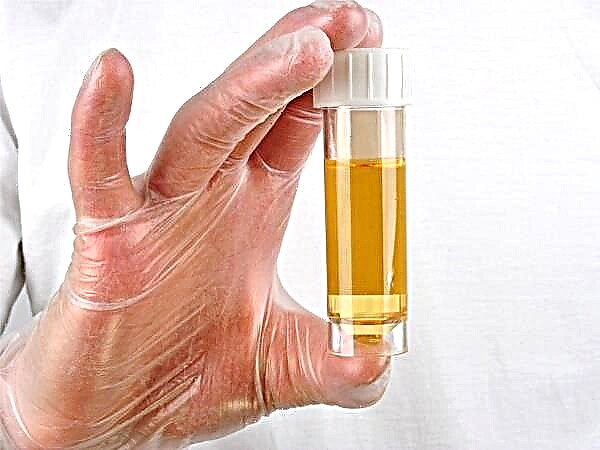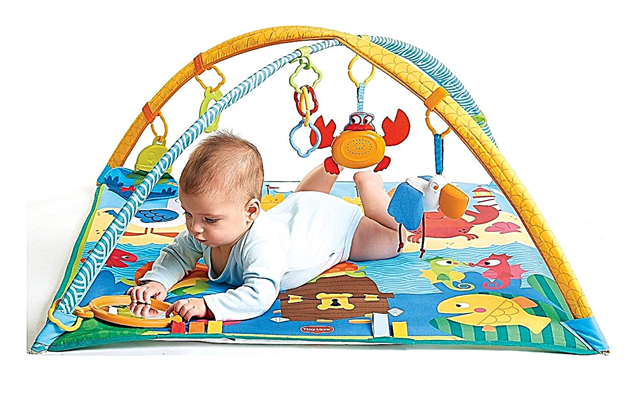
A negative reaction of the respiratory tract to pollen, food, animal hair and other allergens is more common these days. Not only adults, but also adolescents and very young children suffer from allergies. Children experience especially great discomfort with allergic rhinitis, when the nose is stuffy. Watery discharge is released from it, the child complains of itching and sneezes repeatedly.
Hormone-based anti-inflammatory drugs are often used to combat these symptoms. One of the representatives of such drugs is Avamis. It has been shown to be effective for allergenic rhinitis, but many parents are wary of it due to its hormonal structure. To understand whether a small patient needs this drug and how exactly it helps against allergies, it is better to learn about its mechanism of action, permitted doses and possible negative effects before using Avamis.

Release form
Avamis is a product of the renowned company GlaxoSmithKline. It comes in one form, which is a nasal spray. It is dosed and can hold 30, 60 or 120 doses. In the form of syrup, tablets, solution for injection and other forms of "Avamis" does not exist. The drug has its original packaging, which is an orange glass bottle placed in a plastic case. Under a blue removable cap that protects the medication from clogging or dust, there is a spout through which the medication is sprayed into the nasal cavity.
On the side of the case there is a convenient blue button for spraying medicine. Another feature of the packaging is the presence of an indicator (viewing) window on one side of the case. Through it, you can control how much solution remains inside the bottle by looking at the package in the light. The drug itself is a white suspension.


Composition
The active ingredient of Avamis is fluticasone, which is presented in the preparation in micronized form in the form of furoate. Its amount in one spray dose is 27.5 mcg. Additionally, the medication contains dispersible cellulose, disodium edetate and polysorbate 80. It also contains purified water, a 50% solution of benzalkonium chloride and dextrose.

Operating principle
Avamis is a group of glucocorticoid drugs, as its main ingredient is a synthetic glucocorticosteroid. Once on the mucous membrane, it binds to glucocorticoid-sensitive receptors and has a strong anti-inflammatory effect. Usually, the healing effect becomes noticeable 8 hours after spraying. The drug affects the secretion of substances that increase the inflammatory and allergic reactions.
In addition, it has a positive effect on microcirculation at the site of application, provoking capillary constriction and a decrease in exudation. Among the effects of "Avamis" is the ability to stabilize cell membranes (in case of an allergic reaction, the effect on mast cells is especially important). The result of this action will be a reduction in swelling and redness, elimination of itching, prevention of the spread of inflammation.

After spraying in the nasal cavity, the medication is absorbed in a small amount and undergoes metabolic changes in the liver, therefore, the dysfunction of this organ can affect the treatment with Avamis. Excretion of the drug occurs mainly with bile through the intestines.
Indications
The main reason for prescribing "Avamis" for a child is an allergic rhinitis. The drug is in demand both for year-round rhinitis and for seasonal illness. It is also often prescribed for adenoids, when overgrown or swollen tonsils interfere with the child's breathing through the nose. However, the use for such a problem or for adenoiditis should only be prescribed by a doctor.
Sometimes ENT doctors include "Avamis" in the treatment of rhinopharyngitis or sinusitis (for example, they are prescribed for sinusitis), especially if such a disease is caused by an allergic reaction. In such a situation, the drug is intended to help with nasal congestion and reduce the activity of inflammation.

At what age is it allowed?
Avamis is used in patients over two years old. If the child has not yet turned 2 years old, such a spray is not prescribed to him, since it can be harmful to a growing organism and its safety for babies in the first two years of life has not been sufficiently studied.

Contraindications
It is prohibited to inject "Avamis" to children over 2 years of age only in case of hypersensitivity to fluticasone or any of the inactive components of the solution. There are no other contraindications for the appointment of such a spray, however, in severe liver diseases, the medication is used under the supervision of a doctor.

Side effects
The use of "Avamis", although rare, can provoke such undesirable symptoms:
- bleeding from the nose (usually caused by long-term therapy);
- the appearance of ulcers on the mucous membrane in the nose;
- headache;
- discomfort in the nose, such as soreness, dryness, or burning;
- an allergic reaction, such as hives or Quincke's edema.

The occurrence of these or any other problems requires discontinuation of the drug and seeking medical attention for another medication.
Instructions for use
Before using the medicine for the first time, it is necessary to vigorously shake the closed bottle for 10 seconds so that all components of the solution are well mixed. Next, you need to remove the cap, direct the tip away from you and, pressing the button several times, wait for the medicine to spray in the air. After that, treatment can begin. It is also necessary to shake the package before each subsequent application of the spray, because the medicine is a thick suspension, and after shaking its consistency will be more liquid, which will facilitate spraying. To inject the medication, you should firmly press the button with one thumb or fingers of two hands (you can see how to do this in the pictures in the paper instructions).
The child's nasal passages must be cleared of secretions before using Avamis. The tip of the case must be inserted into one nostril and directed not towards the nasal septum, but towards the outer wall. The bottle must be vertical. After asking the child to inhale through the nose, spray the medication once, then remove the tip of the spray and ask to exhale through the mouth. Next, you need to repeat all the steps for the second nostril.


For the sprayer to work properly, it must be looked after. To do this, after each use, the tip should be blotted with a dry cloth (you cannot wipe it with a damp cloth), and then closed with a cap. Do not insert any sharp objects into the hole of the handpiece. It is possible to apply "Avamis" only in the nose, and in order to maximize the effect of the drug, injections should be performed according to a regular scheme.
In this case, the medicine may not work immediately and sometimes it is necessary to wait several days before the manifestation of the clinical effect.


Dosage
It is recommended to start treatment for a child aged 2-11 years one spray of "Avamis" in each nasal passage. The frequency of application is once a day, and if the therapeutic effect is weak, an increase to two doses in each nostril is permissible (only 4 doses per day). As soon as the allergy symptoms begin to pass, the dosage is reduced back to two sprays per day, injecting the medication with one press into each nasal passage.
For the treatment of a teenager (if the child is already 12 years old), as well as for adult patients, it is recommended to start therapy immediately with 4 doses a day, performing two sprays of Avamis in each nostril at once. When the symptoms subside, the dosage should be reduced to two sprays per day, that is, one in each nasal passage, if this is enough for maintenance therapy.

The duration of the use of the spray is determined for each small patient separately, because it is influenced by the form of the disease, and the reaction of the respiratory tract to the hormone, and the appearance of any ailments during treatment.
Overdose
There were no cases when a high dose of Avamis caused poisoning and any negative symptoms before that time. During a 3-day study, which was to determine the bioavailability of the drug, dosages were used that were 24 times the therapeutic.
At the same time, the systemic action of the drug and any ailments were not revealed. Therefore, if the dosage prescribed for the child is accidentally exceeded, it is recommended to simply monitor the condition of the small patient. If the parents are concerned about something, the child needs to be shown to the doctor.
Drug interactions
Considering that "Avamis" acts mainly at the site of application, then such a medicine does not in any way affect the drugs that are taken orally or injected. As for compatibility with other intranasal medicines, they should be checked with a doctor.

Terms of sale
Before buying Avamis in a pharmacy, a doctor's examination is required, since this medicine is sold with a prescription. The average price of a bottle containing 120 doses is 650-700 rubles. Packaging with fewer doses is slightly cheaper.

Storage
The shelf life of "Avamis" is 3 years and does not decrease after the first use of the drug. To prevent the medicine from overheating, storage should be in a place where the temperature will not rise above +30 degrees. It is also impossible to freeze the solution. To prevent the drug from accidentally falling into the hands of small children, "Avamis" should be kept out of their reach.

Reviews
Most reviews about the use of "Avamis" call this medicine effective and quite convenient to use. According to the parents, the spray quickly eliminates the swelling of the mucous membrane, but does not provoke addiction and drowsiness. Its disadvantages usually include the fact that the agent is hormonal. In addition, one can often see complaints about the high price of Avamis, due to which many parents are interested in cheaper analogues.
Doctors also speak about such a drug mostly positively. They note the effectiveness of this spray and call it safe for young patients, but do not recommend using it without a medical prescription. This is the opinion of the well-known pediatrician Komarovsky.

Analogs
If there is a need to replace Avamis with a similar medicine, Nasonex is often used. This popular nasal spray drug also contains a glucocorticoid hormone called mometasone. He, like "Avamis", has anti-inflammatory, as well as a pronounced anti-allergic effect, therefore, is in demand in the treatment of allergic rhinitis. This medication is also allowed from 2 years old, does not cause addiction and has a predominantly local therapeutic effect. Instead, other drugs based on mometasone can be used, for example, "Dezrinit" or "Nosephrine". They are also available as metered-dose sprays and have the same effect.
Other analogues of Avamis are:
- Fliksonase nasal spray. Its basis is also fluticasone, but in this medicine it is contained in the form of propionate. The drug is prescribed for children with lingering allergic rhinitis at the age of 4 years and older. An analogue of this medicine is the Nazarel spray.
- Drops "Dexamethasone". Although they are intended for the treatment of eye diseases, many ENT specialists include them in complex nasal drops, combined with antiseptic, vasoconstrictor, antimicrobial and other agents. However, children should not drip "Dexamethasone" into the nose without a doctor's prescription.
- Spray "Nasobek". The action of this medication is provided by beclomethasone, thanks to which the medication is effective for rhinitis, provoked by allergens. The drug can be used in children from six years of age.
For information on how to use "Avamis" correctly, see the next video.



